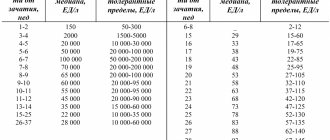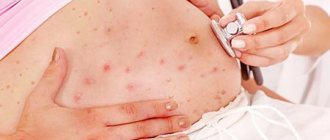What it is
Colostrum is a thick secretion from the mammary glands. It is produced in all mammals: cats, dogs, cows and goats. People are no exception. A few days after birth, thick and viscous colostrum is replaced first by transitional milk, and then by full-fledged breast milk, which in medicine is usually called mature.
In pregnant women, colostrum is released under the influence of changed hormonal levels, because the mammary glands of the expectant mother begin to adapt to the upcoming breastfeeding in advance. Colostrum is a thick, sticky, salty liquid.
In the early stages of pregnancy, it can be transparent, a little later its color changes to various shades of yellow, closer to childbirth, colostrum begins to lighten again, so that after birth it becomes white and opaque, turning into transitional milk. This usually takes from 2 to 5 days.
Colostrum is completely different from milk: they have nothing in common either in composition, consistency, or properties. In its chemical structure, this liquid is more reminiscent of the composition of blood. Despite the fact that in the later stages and immediately after birth it looks almost like breast milk, it differs in color and quantity.
Nature has assigned the most important function to colostrum - it should provide the child with a smooth transition from nutrition through the placenta to nutrition in the usual traditional way. Colostrum will give the baby the necessary protective antibodies and antitoxins so that the tiny organism can survive as easily as possible the enormous stress that will be associated with its birth into this world and adaptation to completely different conditions of existence.
Composition and properties
In terms of energy value, colostrum is significantly superior to breast milk and any artificial milk formula. It is thick and viscous, it contains little water (excessive load on the weak kidneys of a newborn will not benefit him).
But the density of nutrients in it is several tens of times higher than in full-fledged breast milk, which the baby will be fed about a week after his birth.
Colostrum not only effectively removes the feeling of hunger and saturates the baby, but also promotes soft and quick bowel movements . It contains natural laxatives that help the baby, on the very first day, to empty the intestines of meconium - the original dark green feces that accumulated in it during the prenatal period of development.
Colostrum mitigates the consequences of the destruction of red blood cells: it reduces the level of bilirubin, as a result of which the baby may not have physiological jaundice, or it will occur in its mildest and simplest form.
If we consider colostrum from the point of view of its chemical composition, then, in fact, it is a mixture of easily digestible proteins - albumins and globulins. Unlike regular milk, colostrum contains less casein, lactose and fats, which are quickly absorbed. It contains a large amount of natural antioxidants - vitamins A and E, as well as zinc and selenium.
In addition to the fact that these substances are involved in preventing “oxygen stress” in a newborn, they also help the difficult process of establishing the independent functioning of children’s immunity.
In terms of its chemical composition and properties, colostrum has no analogues in nature - it is a unique, valuable and important liquid that increases the newborn’s chances of survival and normal subsequent development.
The benefits of the secret
Thanks to the active work of prolactin, during gestation the ducts and tubules of the breast expand and the formation of a sweetish viscous liquid of white, grayish or yellowish color with a specific odor begins. The closer the moment of birth, the less intense the color becomes.
In the first hours of a newborn's life, colostrum helps him adapt to the external environment. Literally a few drops are enough to saturate the baby and protect him from bacteria and viruses.
Compound
This is a very fatty natural product with a complex chemical composition. Its calorie content per 100 ml is almost 150 kcal, and its density is more than 1.1.
Women's secretions contain up to 85% water, which helps the baby easily get rid of accumulated meconium - original feces. The special properties of the liquid also protect the newborn’s kidneys from overload. Chemically, the secretion is closer to human blood than to breast milk. In addition to water, it contains:
- proteins - a lot of easily digestible globulins and albumins with a low content of casein and lactose;
- enzymes - carbohydrase, peptidase, catalase and esterase.
And also in large quantities:
- vitamins, mineral salts;
- natural antioxidants;
- lacto- and bifidobacteria;
- hormones (including endorphins);
- leukocytes.
This composition not only protects the baby’s delicate body from infectious diseases, but also protects against stress, providing endurance. In addition, it helps the child’s digestive system, which is not yet fully strengthened, to properly absorb nutrients, protects the body’s cells from pathogenic microbes, stimulates DNA synthesis, and removes excess bilirubin.
Research in recent years has shown that in nature there is no more effective protection of a newborn from herpes viruses, polio, RSV, hemagglutinating encephalitis, dysentery and E. coli.
Protective factors
Everyone knows that with breast milk, a mother passes on antibodies to her child, which in the first months of his life form passive (or innate) immunity. But not everyone knows that the content of immune factors is higher in colostrum than in milk. In particular, this applies to substances such as immunoglobulin A, lactoferrin. Colostrum is rich in living macrophages-leukocytes, neutrophils and lymphocytes.
All these “tenants” of the mammary gland secretion do not participate in the baby’s digestion and are not digested by his body. Once they enter the stomach, they remain in the gastrointestinal tract, where they come into “combat readiness”, protecting the baby from the invasion of pathogenic bacteria and aggressive viruses that penetrate through the mouth.
T-lymphocytes in colostrum exceed in number the number of similar cells in the blood. Leukocytes from colostrum can help the child develop protection against viruses. Some polysaccharides, which are part of the secretion of the mammary glands, act as an anti-glue - they prevent harmful microorganisms from attaching to the intestinal walls and mucous membranes of other organs.
Laboratory research has demonstrated interesting facts: it turns out that female colostrum is a unique natural antibiotic and antiviral agent “in one bottle.” It actively resists E. coli, salmonella, cholera pathogens, dysentery bacillus, and can also destroy the structure of many viruses - rotavirus, Coxsackie virus, polio pathogen, herpes virus.
That is why it is customary to put a baby to the breast in the delivery room, so that from the first minutes of life in a world filled with bacteria and viruses, he is ready to fight back.
From the same point of view, it is important to put the baby to the breast in the first days after birth, even if there is no milk yet. Even a few drops of colostrum are quite enough to fill the baby, because this liquid will satisfy all his energy needs in full, and besides, these days are very important for future health.
The immunity of children who were given colostrum is always stronger and stronger than the immunity of children who were given donor milk or artificial adapted milk formulas from the first days. This means that such children get sick less often and more easily, and grow stronger and more resilient.
Can I drink colostrum?
Young children can not only eat milk, but also need it. Since in the first days the child does not yet have his own antibodies, there is no immunity to any pathologies. With colostrum, the baby receives the mother's immune cells, which provide him with protection from various infections and viruses.
For an adult, colostrum is not such a valuable product. Since your own immune system is fully formed, there is no need for foreign cells. Eating colostrum is not prohibited; some experts claim that it is also beneficial for adults, helps to heal faster in a number of pathologies, and can be used as a supplement for athletes. However, you should not express or suck it out during pregnancy: this can lead to uterine tone and miscarriage.
Dates of appearance
There are no uniform standards regarding at what stage of pregnancy, at what week colostrum should begin to be released. In primiparous women, whose prolactin levels are initially low and whose nipples are stronger, colostrum may begin to be released shortly before or even after childbirth.
In this case, the breasts will hurt, swell, and at an earlier stage, perhaps, when pressing on the nipples, a small, barely noticeable amount of thick liquid will be released.
Most often, primiparous women indicate that the first signs of colostrum appeared in them at about 10-12 weeks of pregnancy. Even more often, the terms indicated are 16-18 weeks. In the majority, it did not flow out and was detected only by mechanical pressure with fingers on the nipple on both sides.
If a woman already has experience breastfeeding and has given birth, then in subsequent pregnancies colostrum will arrive earlier. The fact is that the level of prolactin in the body of a woman who has already given birth is always higher than that of a nulliparous woman. In addition, the ducts of the mammary gland are already dilated after the first child, and therefore there will be more colostrum; it can leak, causing hygienic inconvenience to the woman.
Is it possible to squeeze out?
The answer to this question is clear - squeezing out colostrum is strictly prohibited. Mechanical stimulation of the nipples activates the production of oxytocin, a hormone that tones the smooth muscles of the uterus. Increased tone creates a threat of miscarriage in the early stages or premature birth at more noticeable stages of gestation.
Increased uterine tone increases the likelihood of developing fetoplacental insufficiency, and also contributes to the development of oxygen starvation of the fetus.
From this point of view, you should avoid not only squeezing out colostrum, but also accidental mechanical impact on the nipples, for example, during massage, washing the mammary glands, preparing them for breastfeeding, or during sex. Both drinking a hot drink and taking a hot bath can increase oxytocin levels.
Squeezing out colostrum does not make sense after childbirth either - usually the processes of lactogenesis proceed independently. The exception is when a woman has already developed transitional milk, but the nipples are too “tight” and the baby cannot “suck” them.
Pumping is also indicated when converting colostrum into milk when it is not possible to feed the baby fully (the baby does not eat much, the nipples have individual anatomical features that make them difficult for the child to grasp, and also if the baby is not brought in for feeding (he is in intensive care or undergoing procedures). )). In this case, pumping will stimulate milk production, and then the child will not need complete, healthy and much-needed nutrition.
If colostrum leaks intensely during pregnancy and stains the pregnant woman’s clothes and underwear, it is best to use a special bra. These are made especially for nursing mothers. They provide space for liners that will absorb excess liquid, preventing unpleasant stains on clothes.
Possible problems
Colostrum, which was present and suddenly disappeared, may be an indirect sign of a frozen (non-developing) pregnancy. Along with the disappearance of colostrum, other symptoms of an “interesting situation” usually disappear - toxicosis, increased appetite. At later stages, fetal movements stop and its heartbeat cannot be heard.
It should be noted that in the event of intrauterine fetal death, colostrum does not disappear immediately, but several days after the tragedy. In the early stages, a woman may not feel the death of the fetus for a long time. Therefore, the disappearance of colostrum should alert a pregnant woman. You definitely need to visit your doctor and undergo an urgent examination.
If a woman notices pinkish impurities, as well as blood fragments, in colostrum, there is no need to panic. The secretion of the mammary glands with blood may be a variant of the physiological norm. This is due to the expansion of the milk ducts. Sometimes this process occurs so intensely that the capillaries (small blood vessels) cannot stand it and burst. This is how blood impurities appear in colostrum.
But if the colostrum has become greenish, gray, caked crusts from such liquid form on the nipples, and the colostrum has acquired an unpleasant odor, then this may indicate an infection, most often bacterial. At the same time, the chest becomes more painful, touching it causes severe anxiety.
Such pathological changes may be a sign of mastitis, staphylococcal infection, or a tumor process in the mammary gland. The most careful should be women who have previously undergone breast surgery.
If the color or smell of the secretion of the mammary glands changes, you should immediately consult a doctor, get tested and undergo treatment. Many problems can be successfully solved even during pregnancy if the doctor prescribes the correct and competent treatment in a timely manner.
On thematic forums on the Internet, pregnant women often discuss the presence or absence of colostrum during pregnancy. However, the comments are so contradictory that they themselves confirm the fact that colostrum has no effect on the amount of breast milk.
Often pregnant women are faced with the problem of removing dry “caked” crusts on their nipples. Experienced mothers recommend soaking them in warm water and never trying to remove them - this increases the likelihood of nipple injury, cracks, and micro-abrasions. If bacteria then get into them, then severe inflammation cannot be avoided, because colostrum is a good nutritional medium, rich in proteins.
If colostrum is abundant, it is best for a woman to carry dry pads and a pack of wet wipes with her so that hygiene procedures are available anywhere and at any time.
By the way, the quality of nutrition and the amount of fluid you drink also do not affect the quantity and thickness of colostrum. This is the answer to another common question among pregnant women.
For information on the properties and reasons for the appearance of colostrum, see the following video.
What to do if colostrum appears: breast care rules
As soon as a woman's body undergoes hormonal changes due to pregnancy, she begins to produce colostrum.
This happens already in the first trimester - however, the nutrient fluid is released in minimal quantities, so not all pregnant women notice it. Although among expectant mothers there are those for whom the appearance of colostrum generally becomes the first sign of an “interesting situation” - as you understand, the amount and intensity of colostrum secretion at the beginning of pregnancy is an individual thing. In the second trimester, the number of women who pay attention to dirt on their underwear increases. Finally, in the third trimester, almost all pregnant women know that in certain situations, colostrum is actively released, literally “dripping” from the breast.
Many women ask the question: “When does colostrum appear?” The hormonal background of the expectant mother begins to change already in the first day after conception. The mammary glands are also activated, and in some women the product useful for the baby comes already in the early stages, after a delay in menstruation. However, expectant mothers usually notice a slight discharge from the nipples in the 2nd trimester.
During the third trimester (around 32 weeks), the fluid becomes less thick and more clear. Its amount usually does not change until childbirth. However, there are a number of factors that stimulate the release of colostrum:
- massage of nipples, mammary glands;
- hot bath or shower;
- prolonged sexual contact;
- strong emotional experiences;
- warm drink.
When colostrum begins to appear, the breasts require a little more attention. The rules for caring for this part of the body are very simple:
- Wearing a soft bra that does not compress the mammary glands. The ideal option would be a special model for pregnant or lactating women. It is necessary that the bodice be of the appropriate size and made of breathable material.
- Rinse your breasts twice a day with warm water without detergent. This action must be performed to prevent the proliferation of microbes, the appearance of cracks, and the development of the inflammatory process.
- After washing, you should dry your breasts with a soft towel, blotting the skin and avoiding sudden movements.
- If there is a lot of colostrum and it flows (this often happens from 35 weeks), a special breast pad or a cotton pad or a clean cotton handkerchief should be placed between the bra cup and the nipple.
- Breast massage and other touching should be kept to a minimum so as not to provoke excessive colostrum secretion and stimulation of the uterus. The same applies to pumping.
- Use a cream with a moisturizing effect (there are special products for pregnant women). This will prevent cracks and stretch marks from appearing. How many times should I apply the cream to my breasts? Once a day will be enough.
- Follow a diet: eat more fresh fruits, vegetables, proteins of plant and animal origin (meat, fish, legumes, etc.). Reduce the amount of potatoes, white rice, and flour products you consume. 4 weeks before giving birth, eat more healthy fats. During pregnancy, you should say a firm “no” to alcohol and tobacco. The same rules apply to women who have given birth and whose breasts produce mature milk.
So, colostrum can begin to appear at any stage of pregnancy, even immediately after a missed period. If the expectant mother notices that alarming symptoms have arisen, she should consult a doctor. In any case, you need to be attentive to your health and take care of your breasts when producing colostrum.
Colostrum secretion from mammary glands during pregnancy
What is colostrum and what does it look like? It is a sweetish-tasting, yellowish liquid with a watery structure. Usually it begins to be released immediately after childbirth, but it can appear earlier - in the second trimester of pregnancy, most often from the 19th week.
At first, colostrum is yellow and thick, but closer to childbirth it discolors and becomes more liquid. Colostrum has a rather interesting chemical composition: it is even more caloric than milk from a nursing mother, and contains substances such as fats, proteins, milk globules, specific colostrum corpuscles, vitamins A, E, C, B, and minerals. Such milky discharge during pregnancy is not a cause for concern. They are provoked by the hormone prolactin, which is responsible for the secretion of milk.
Hormonal changes in the body of a pregnant woman are so rapid that the prototype of milk - colostrum - begins to appear “in advance”. Breast mass or active stimulation during sexual intercourse can stimulate the production of colostrum.
There are many myths among people about discharge from the mammary glands during pregnancy.
Firstly, that colostrum is a harbinger of imminent labor. This is why many people begin to panic when they notice yellowish droplets coming out of their nipples in the second or early third trimester of pregnancy! Doctors say that many expectant mothers call them with a complaint about the appearance of colostrum and ask them to be hospitalized just in case. But these fears are not justified: discharge from the breast during pregnancy itself is not a harbinger of an imminent birth.
Secondly, the appearance of colostrum is the first sign of pregnancy. Some women, wanting to know if they are pregnant, press on their nipples, trying to see if anything stands out or not. However, such pressure itself can cause the appearance of colostrum, and discharge from the breast occurs not only in pregnant women: this happens in men, and even in newborn girls, and all due to an increase in the level of prolactin in the body. And, by the way, by pressing on the nipple, you can introduce an infection through microcracks invisible to the eye.
Thirdly, if a woman has a lot of colostrum, then there will be a lot of milk. Accordingly, those women who have not had any discharge from the breasts during the entire period of pregnancy begin to worry that after giving birth they will have to feed the baby with store-bought formula. In fact, there is no relationship between the amount of colostrum and the amount of milk.
Hygiene rules for breast discharge in pregnant women
It would be useful to talk about hygiene. It is important to choose the right bra : with a frame hidden in the cups, with good support and an easily adjustable clasp that secures well, but in no way compresses the breasts .
If you start to experience discharge from the mammary glands during pregnancy, it would be useful to use special pads (sold in stores and pharmacies) or ordinary cotton pads (this is more convenient than putting pieces of fabric under it, and it’s also more hygienic, because it’s easier to throw away the pad than to wash it every time) flaps).
Even if the discharge is not too abundant, it is undesirable to get it on the underwear, because warm colostrum is a good environment for the growth of bacteria, which can again lead to infection in the breast. It is also necessary to wash your dairy products several times a day with warm water without soap - these simple hygiene rules will help you prevent many problems.
Most importantly, do not try to express milk discharge during pregnancy . You may have heard that breastfeeding mothers with a small amount of breast milk are advised not to stop feeding the baby, but, on the contrary, to put him to the breast as often as possible - stimulation of the nipples triggers the mechanism of breast milk production.
The situation is the same with colostrum: if you express it, it will become more, not less. Therefore, no intense breast stimulation, because, in addition to increasing the amount of discharge, this stimulates the release of oxytocin into the blood, which stimulates contractions of the smooth muscles of the uterus, which means it can cause a miscarriage (especially if you are at risk of miscarriage).
Don't be alarmed if you feel a slight itching in your chest . There are two reasons for this: firstly, colostrum is pushed through the ducts, and secondly, the breast itself grows, preparing for milk production, the skin stretches and begins to itch.
Do not forget to use special creams for stretch marks, this will relieve you of the itching sensation and prevent the appearance of unsightly scars on the skin after childbirth. These creams, like any cosmetics during pregnancy, are best purchased at a pharmacy.
When to see a doctor
Sometimes, especially if this is your first pregnancy, discharge from the mammary glands causes completely unnecessary fears. But there are times when you should still be wary.
So, a reason to see a doctor:
- regular aching chest pain;
- uneven enlargement of the mammary glands, depressions and bumps on them;
- yellow or bloody discharge from the nipples.
Don’t be alarmed right away, for example, in the sixth or seventh month, many women notice that the colostrum has become watery with bloody spots - such changes are provoked by hormones actively secreted during this period (prolactin, which is responsible for the presence or absence of milk, and oxytacin, which is responsible for its entry into the milk ducts).
Such breast discharge during pregnancy is generally considered normal, but provided that you consult your doctor and he will tell you that there is nothing to be afraid of.
Tell your gynecologist about any changes that occur during pregnancy, including breast discharge. If he doubts anything, he will refer you to a mammologist who, after a thorough examination, will tell you the reason for the appearance of uncharacteristic discharge.
Be prepared for him to ask you the following questions:
- How long have you had discharge?
- What color are they?
- coming from one breast or both?
- Do they appear when pressed or just like that?
Additional examination may be needed: blood test, breast ultrasound, mammogram, ductogram or breast MRI. Sometimes the fluid released from the chest is also examined. However, during pregnancy it is rarely necessary to carry out such serious examinations, because the reason often lies in the restructuring of the body’s hormonal levels. But still, if you are concerned about discharge from the breast during pregnancy, consultation with a doctor is mandatory in order to immediately rule out the possibility of any serious diseases of the mammary glands.
When does the first colostrum appear during pregnancy?
It is impossible to say in advance when colostrum will appear for you personally - it’s all individual. Sometimes a few drops of colostrum can be squeezed out as early as the second trimester, and for some even earlier. But most often colostrum comes after the 30th week.
It happens that during the entire pregnancy there is no discharge from the breast, and colostrum appears literally before childbirth.
By day 3-4 of the postpartum period, colostrum is replaced by transitional milk, which turns into mature milk.
Colostrum - what is it?
Colostrum is unripe milk, high in calories (150 kcal/100 ml), and contains substances that are necessary for the development and health of the baby.
The release of fluid in pregnant and lactating women begins due to hormonal changes in the body, which is responsible for the production of the hormone oxytocin.
What's included:
- colostrum corpuscles;
- milk sugar and other carbohydrate components;
- protein compounds – albumin, globulin;
- lipids;
- bacteria and enzymes beneficial to the digestive system;
- hormones;
- minerals;
- vitamins;
- water.
Colostrum is quickly absorbed and helps the newborn’s body quickly adapt to new environmental conditions.
Why is colostrum released during pregnancy?
If colostrum is released from your breasts while carrying a baby, this is absolutely normal, but if it is not there, then there is no need to worry either.
What is colostrum during pregnancy?
Its appearance is a sign that the expectant mother’s body is preparing for the birth of a child and is trying to provide the baby with healthy nutrition in advance.
At what stage does colostrum appear during pregnancy? The timing of appearance is very individual, most often milk discharge can be seen in the second half of the gestational period, in some women it appears only a few weeks or days before the birth of the baby, colostrum is often observed in the early stages of pregnancy.
Characteristics of colostrum at different stages
- In the first trimester. Almost immediately after conception, the mammary glands begin to actively prepare for breastfeeding - the lobules and diameter of the ducts increase. At this stage, colostrum is usually released in small quantities, you may not even notice it. But in some cases, it is the appearance of a large amount of unripe milk that becomes the first manifestation of pregnancy.
- In the second trimester , colostrum is synthesized more actively, and sticky spots can be seen on the underwear. The amount of milk discharge does not depend on the time of day and nutrition; they do not necessarily appear every day.
- In the third trimester , the amount of colostrum increases and its consistency changes. After birth, it is secreted for about a week, after which it is replaced with full breast milk.
When colostrum is released, discomfort in the mammary glands often occurs - tingling, itching, this is due to the fact that the pectoral muscles tense to push the fluid to the nipple. Since unripe milk is quite thick, the discomfort is quite noticeable.
If there is no colostrum, then this is not considered a pathology, there is no need to stress yourself out and think that you will not have milk after childbirth. The release of colostrum depends on various physiological reasons, so it is quite normal if the first drops begin to be released immediately after the birth of the baby.
Feeling of discomfort
When colostrum is released during pregnancy, itching or tingling may occur, but does not cause severe discomfort. If the discharge is accompanied by lingering pain in the lower back, this may be a sign of an imminent miscarriage or early labor. You need to visit a gynecologist and undergo conservation if necessary.
Not all symptoms are alarming; they can be a variation of the norm. You need to visit doctors on time, follow recommendations and be less nervous - this will have a bad effect on the fetus.
Most often, discharge appears in the second or third trimester, at which time the hormone prolactin is produced more intensely. The release of the first colostrum occurs at 20-36 weeks (depending on the characteristics of the pregnant woman’s body).
Some note the appearance of milk by 12-18 weeks, in the very first trimester of pregnancy. For others, the first discharge appears during childbirth or even after the birth of the child.
Any option is considered normal, and you should not worry about it. The only warning factors are deterioration in health and the greenish color of the colostrum.
What color is colostrum in pregnant women, properties of unripe milk
Since women are faced with various unpleasant diseases, expectant mothers often wonder what colostrum looks like and whether it can be confused with dangerous discharge.
- Supplies protein and antibodies into the child’s body, which support the baby’s immunity in the first six months of life.
- Creates healthy microflora in the intestines, promotes better absorption of milk, normalizes the process of defecation, and prevents the proliferation of pathogenic microbes in the digestive system.
- Accelerates the process of excretion of meconium; if the original feces do not come out, the baby’s gastrointestinal tract will not be able to function normally.
- Binds excess bilirubin, which reduces the risk of developing jaundice in newborns.
- Provides the baby with all the necessary minerals and vitamins that the body requires for normal growth and development.
- Supplies antioxidants into the blood, which allows the respiratory organs to quickly adapt to the environment.
- Reduces the risk of colic.
Initially, colostrum is yellow in color, the shades may vary, it has a thick, sticky consistency, a distinct milky smell, and a sweetish taste. As you approach birth, unripe milk becomes thinner and clearer.
Sometimes pink colostrum is released, or with small admixtures of blood, which is also not a reason to panic if there are no other alarming symptoms. Against the background of strong expansion of the ducts, capillaries sometimes rupture, which causes the appearance of blood in unripe milk.
The importance of colostrum for a newborn
The baby needs colostrum from the first days and even hours of life. It is advisable that the child receives its first drops in the delivery room, and then feeds on it, and not on artificial formulas during his stay in the maternity hospital.
- Colostrum saturates the child’s body with immune cells. The child’s own immune system develops gradually and begins to function fully by the age of approximately 6 months. In mature milk, the concentration of factors important for immunity is significantly lower, which is why it is so important that the child receives a sufficient amount of colostrum.
- Prevents the development of jaundice by binding excess bilirubin.
- Promotes the maturation of the intestinal epithelium, prepares it for the digestion of milk, and promotes the removal of meconium.
- Populates the intestines with beneficial microflora and prevents harmful bacteria from multiplying.
- Helps adapt the respiratory system by saturating the blood with antioxidants.
Signs of deviation from the norm
Sometimes colostrum can be dangerous, but only if you have a number of negative symptoms - nagging pain in the lower abdomen, bleeding from the vagina. Such signs are harbingers of miscarriage, and the release of unripe milk only aggravates the situation, since the uterus contracts during the synthesis of colostrum.
Other dangerous symptoms:
- severe chest pain is a sign of an inflammatory process, purulent mastitis;
- a large amount of blood can signal inflammation, the presence of neoplasms in the mammary glands;
- Colostrum has an unpleasant odor due to bacterial infections, but in the early stages this phenomenon can be caused by changes in hormonal balance;
- the release of colostrum in non-pregnant women is associated with an increase in the concentration of prolactin or oxytocin in the blood, inflammatory processes, and the presence of tumors.
If you notice these symptoms, tell your doctor immediately.
Alarming symptoms
The process of formation and release of colostrum is approximately the same for all women. But sometimes a small amount of blood is detected in the secretion. This is not always an alarming symptom, but you should consult a doctor.
Often in the period from the second to third trimesters, a pregnant woman begins to feel itching and bloating in the chest. There is a feeling as if something is pressing from within. This is due to the growth and differentiation of the ducts and is considered normal. The body itself sends alarm signals when any pathologies occur.
- Pain with discharge from the chest. May indicate the presence of inflammation of the mammary glands. To avoid purulent mastitis and subsequent infection of milk, you should undergo a course of anti-inflammatory treatment after examination by a doctor.
- Pain in the lower back, sacrum or lower abdomen. Possible evidence of uterine hypertonicity and threat of miscarriage.
- Copious bleeding. A variant of the symptoms of benign and even malignant neoplasms.
- Unpleasant smell of secretion. A probable sign of the development of infection in the mammary glands. At the same time, the woman feels weakness and nausea. Timely antibiotic therapy is necessary.
The appearance of colostrum in the absence of pregnancy is often associated with the presence of an inflammatory process or the development of a pituitary tumor (accompanied by an increase in prolactin levels). However, you should not worry if the discharge persists for a year after the end of breastfeeding and is not accompanied by other complaints. Otherwise, you must urgently contact a specialist to clarify the condition.
Colostrum appears during pregnancy - what to do
If there is no threat of miscarriage, the appearance of colostrum should not bother you in any way.
If the discharge is very heavy, use special absorbent bra pads, they can be purchased at any pharmacy.
Rules for caring for the mammary glands when secreting colostrum:
- Change pads as often as possible, since a moist, warm environment combined with nutrient fluid is an excellent place for the proliferation of various pathogens.
- Be sure to wash your breasts with warm water and wipe with baby wipes.
- Use hypoallergenic breast moisturizers to help prevent stretch marks and cracked nipples in the future.
- Try to stick to proper nutrition - reduce the amount of food with fast carbohydrates, 4-5 weeks before giving birth, increase the amount of fat in the diet.
If colostrum is released from the breast, it is strictly forbidden to express it, it is forbidden to massage the mammary glands - any stimulation can negatively affect the course of pregnancy. Remember, with the active production of immature milk, the uterus begins to actively contract.
Stress, sexual intercourse, heat, hot showers, or consumption of hot drinks and food can increase the secretion of colostrum in pregnant women.
If you are already actively producing immature milk, try to protect yourself from provoking factors.
Breast hygiene for the expectant mother
The release of colostrum does not require any special procedures. Breast care falls within the framework of normal hygiene with only minor additions.
- Most importantly, colostrum should not be squeezed or expressed. Firstly, it increases its quantity, and secondly, it increases the tone of the uterus. In the best case, pumping will lead to the onset of lactation before birth, and in the worst case, the baby will be born prematurely.
- A bra should be worn that is supportive but not constrictive. As your breasts grow, you need to move up to the next size.
- The mammary glands should be washed with clean water without using gels or soap 1-2 times a day. It is necessary to place cotton pads between the nipples and the bra and change them regularly, especially if the fluid flows heavily. This will help prevent bacteria from multiplying in the nutrient medium such as colostrum.
- You should use soft towels and just blot your nipples with them without rubbing them. If microcracks form in the nipples, then a direct path to infection will be opened. To prevent cracks from appearing, it is advisable to use moisturizing creams.
Colostrum is produced in all women during pregnancy. But not everyone has it leaking from their nipples. It must be remembered that the norm is the release of colostrum from the first weeks of pregnancy, and its complete absence until childbirth. In order for your breasts to be healthy when your baby is first latched, you need to take proper care of them. And in order not to cause an increase in uterine tone, do not squeeze colostrum from the breast.
Dispelling popular myths about colostrum
There are many different statements about colostrum, most of them are far from reality.
- The release of colostrum indicates the approach of labor - there is no relationship between these processes; immature milk may appear immediately after conception, or not appear at all.
- The amount of colostrum is related to the amount of breast milk - the volume of unripe milk does not affect the quality, fat content and quantity of milk.
- If colostrum suddenly disappears, there will be no milk. During pregnancy, unripe milk appears and disappears; this is a normal process. After childbirth, everything will definitely appear, both colostrum and milk.
The release of colostrum is a very individual process, like every pregnancy, so don’t be nervous if something doesn’t go as it does for others. If something worries you, you can always consult your gynecologist.
Colostrum: myths and legends
Since the time of our great-grandmothers, there have been many “true signs” associated with colostrum among pregnant women, which, however, have no physiological basis. It’s interesting to check whether they “worked” for you or not?
Such a prediction can seriously worry expectant mothers who notice the appearance of colostrum already in the second, or even in the first trimester. Fortunately, it has nothing to do with reality.
In fact, neither the period at which colostrum begins to be released, nor its volume before and even after childbirth, correlates in any way with breastfeeding.
During pregnancy, colostrum can be periodically released, then the discharge stops, then resumes again... this does not affect the quality of breastfeeding in any way.
5.02.2018
Prepared by Ekaterina Ershova
for pregnant ,
beginning of breastfeeding
,
physiology










